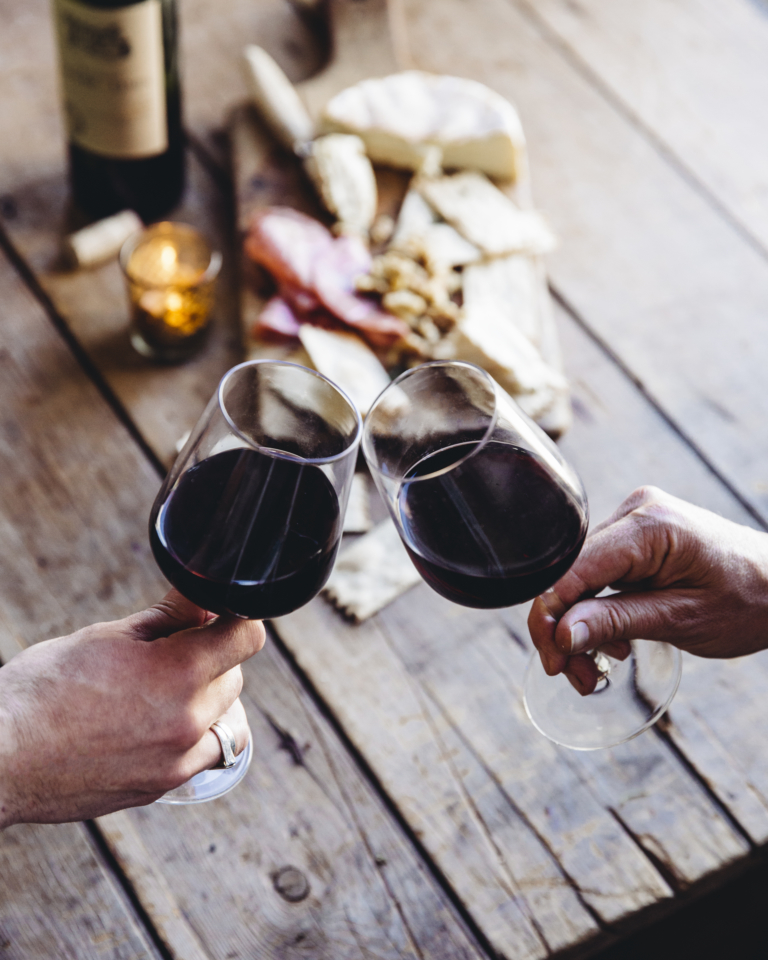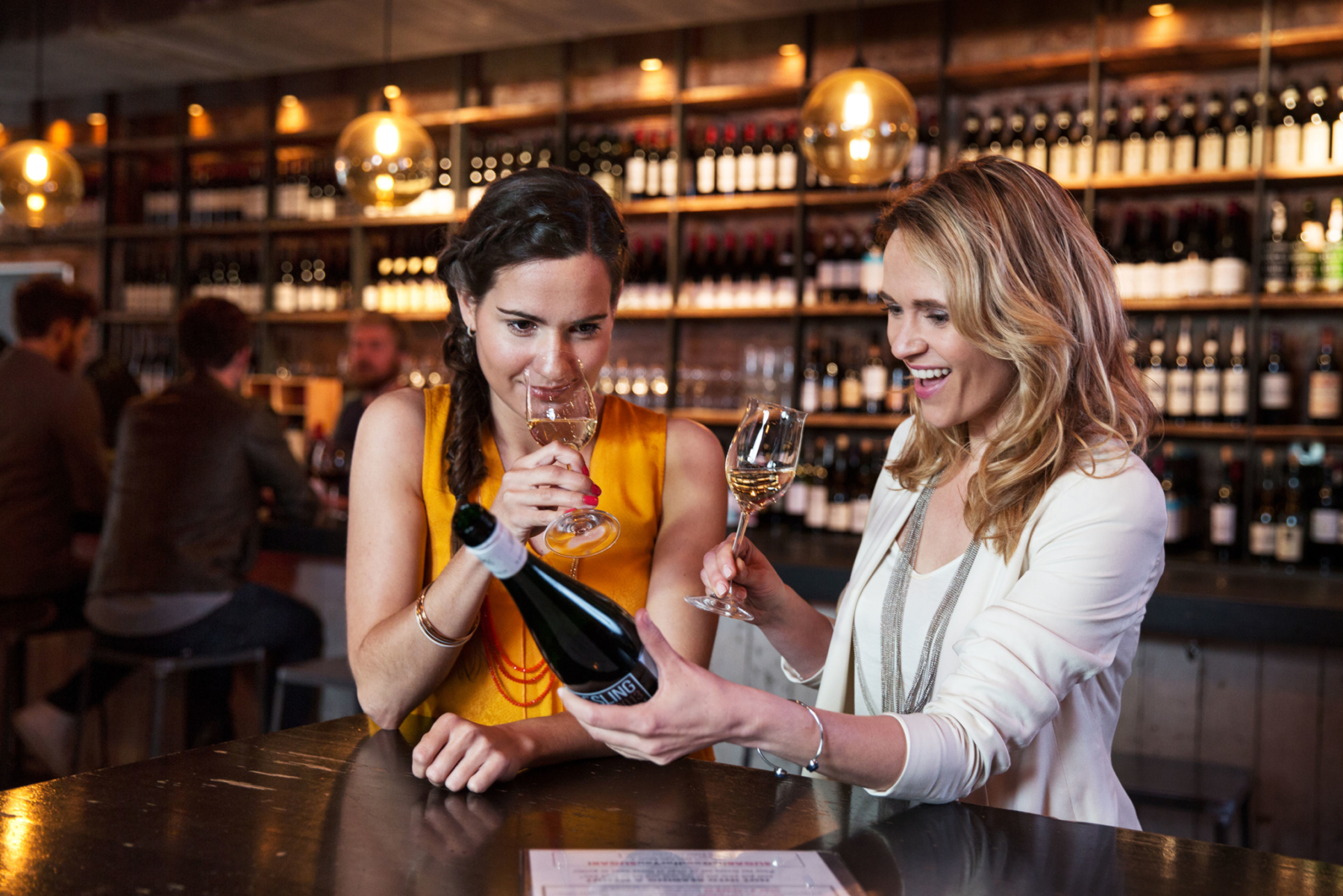© Deutsches Weininstitut
Have you ever attended a formal wine tasting? Or a party dedicated to sharing and discovering new wines, with lots of people talking about lots of opened bottles? The odds are good that most people don’t go to fussy formal tastings, unless they’re in the wine business. And while there’s usually plenty of wine at parties big and small, most people would rather sip the wine while talking about anything else but wine. That’s probably because talking about wine can be intimidating. It brings to mind all of that sniffing, swirling and making swishy sounds, followed by pronouncements of pedigree—or lack thereof. That part of wine tasting, of course, is more about posturing than tasting. Most wine pros, meaning people who work in the trade, would tell you to relax and remember that taste is subjective. And you already know how to taste. Just switch the noun ‘wine’ with ‘coffee’ (or tea) and think about how personal that is to your own tastes. Do you like your coffee bold and black? You’d likely love a full-bodied red Bordeaux. Do you prefer tea with lemon? You’ll be thrilled by the bright acidity in German Riesling. Whole milk in your coffee? Try a creamy, full-bodied white from Pessac Leognan. Prefer a lighter roast with more fruitiness? There’s a Spätburgunder (aka Pinot Noir) from Germany with your name on it.

© Favoreat/Chloé Crane-Leroux
Ultimately, there is a logic to wine tasting that is completely unpretentious and perhaps even fun. Herewith are the “Five S’s of Wine Tasting,” and they’re actually easy to run through in your head when drinking wine, whether you’re with a group or even by yourself. Just like learning to use a corkscrew or grinding your own coffee, it takes some practice, but once you get it, you get it.
SEE | Take a quick look at the color of the wine (it helps to hold it up to something light or white). There’s a lot of info in the appearance but none of it really matters unless you are tasting ‘blind’ (with the label covered). You have all that you need to know on the label. However, remembering the depth of or lack of color of each grape or regional wine is one way to build a vocabulary and visual memory of various styles.
SWIRL | Give the glass a swirl, and then take a look at the wine as it recedes down the side of the glass. Most wines still (non-sparkling) wines will pour down in steady tears (or legs), but wines with high sugar or high alcohol will pour down much more slowly, like syrup. It’s noteworthy, but not really important unless you’re blind tasting. Swirl again and move onto the next step…
SNIFF | Smell the wine. Don’t overthink this too much. Do you smell fruits? Anything earthy? Does it smell pleasant or funky? Either answer is fine because, just like great cheeses, some wines can smell really unusual and still be delicious. If you smell fruits, dig a little deeper. Are they star fruits (apples or pears), stone fruits (peaches and plums) or citrus? Are they fresh fruit or dried fruit aromas? Marmalade? If you smell earthy, do you mean chalky and minerally or wet and damp? These are all primary aromas that are grape-derived. Secondary aromas come from winemaking practices, typically from yeast and easier to smell in white wines, like nuttiness or yeastiness (think beer). Lastly, are tertiary aromas that derive from aging, usually in bottle, and sometimes from oak aging, like savory, nutty and leafy aromas.
SIP | When we taste, it’s not only our tongues that are doing the work, but also our noses by way of our retro-nasal passage between our nostrils and throat. It’s true: If you pinch your nose closed and sip and swallow pickle juice, you will taste nothing at all. So the initial taste we experience on our tongues changes once we swallow, because the air we pull in through our noses as we swallow changes everything. Still, our tongues can detect salty, sour, sweet, or bitter. We can also discern the texture of a wine, its zippiness or its silkiness. Tannins often give us a cotton-mouth sensation. Notice after you swallow how much you salivate (or not) and how often it happens (often in waves). This is the wine balancing on your palate, and you’ll experience two elements in whites—fruit and acid, and four elements in reds—fruit, acid, tannin and alcohol. How long does it take until the wine settles down and disappears? This is called the length.
SAVOR | In professional tastings, the last ‘s’ is to spit, but you’re here to have fun, so let’s just savor the wine and taste it a few times thoughtfully, thinking about how it balances, what you like about it and, perhaps, what you don’t like about it. This is how you build a point of reference as well as a palate memory.
So, there you have it—and you didn’t have to make any slurping sounds or say anything grandiose. Once you get into the habit of paying attention to what you’re tasting (assuming, of course, that you want to), you’ll build muscle memory that will become second nature. You’ll be tasting like a pro without ever sounding like one.
